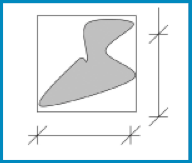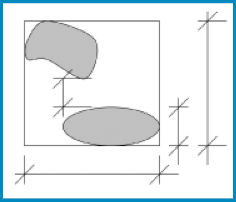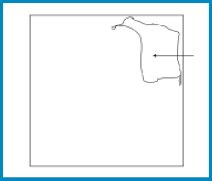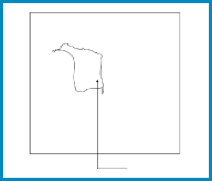Check out these useful tips for each stage of buying your home.
Contact Us

Before acquiring your property, remember to collect as much information as you can about it, including:
Before completing the transaction, verify with the owner that all outstanding rates, land rent, property maintenance and management fees have been settled, otherwise as the new owner you may become liable for these. Also, remember to check with the estate agent or owner whether the property has any unauthorised building works, or is subject to a repair order. If yes, check whether the bank will accept the property for mortgage.
Things to note when viewing a property:
You should make the following requests to your estate agent before making any decisions:
|
Step 1: Find out about current mortgage policies
|
Step 2: Check what you can afford
|
Step 3: Search for properties
|
Step 4: Sign Sale and Purchase Agreement
|
Step 5: Choose the right mortgage
|
Step 6: Complete the home-buying process
|
|---|---|---|---|---|---|
|
|
1.Choose your preferred property
2.Obtain a valuation of your property through a bank or estate agent |
1.Sign the Provisional Sale and Purchase Agreement and pay the initial deposit
2.Engage the services of a solicitor |
|
1.Sign the Formal Sale and Purchase Agreement
2.Pay the full deposit and stamp duty through your solicitor 3.Complete all mortgage formalities with the bank once the mortgage application is approved 4.Apply or re-register for utilities such as water, electricity and gas, and telephone and internet connections 5.Conduct a final inspection of the property before completing the transaction 6.On the transaction day: • The Purchaser and the Vendor sign the title deed and mortgage deed • When all the documents have been signed, your solicitor will notify the bank to transfer the mortgage loan amount to the Seller through their solicitor • Take possession of the keys and complete the home buying process by taking over your new property |
The mortgage application process is very simple. Simply contact one of our Standard Chartered Mortgage Masters, who will arrange everything for you. Please get the following documents ready in advance:
Basic documents
|
Occupation Type
|
Documents required for a 60% or under mortgage loan application
|
|---|---|
| Regular Salary Earner | A bank passbook/monthly statement showing salary records for the last 2 months |
| Non-regular Salary Earner |
|
| Self-employed (state ownership %) |
|
| Rental Income Earner | A valid lease agreement with a residual term of 6 or more months |
|
Fee and charges
|
Details
|
|---|---|
| Down Payment |
|
| Legal Fees |
|
| Stamp Duty, Buyer’s Stamp Duty, Special Stamp Duty |
|
| Insurance |
|
| Agency Commission |
|
| Miscellaneous Fees and Charges |
|
Having purchased a property, many owners find themselves plagued by problems such as cracks in marble surfaces, whether bathroom floors should be sloped, and water leaks. Mr. Tsim Chai-Nam, a renowned Hong Kong flat inspector, offers some handy tips on these topics.
The greatest difficulty when inspecting natural stone is to distinguish whether a crack is natural or artificial. Here are some tips for checking cracks:
Unlike artificial stone, natural stone is often inconsistent in colour, and may be handled as follows:
Our responsibility to preserve Earth’s limited resources should be kept in mind. If every stone with a tiny defect was replaced, we could not meet the demand even if we had hundreds more quarries; not to mention the big increases in carbon emissions and in the consumption of precious water resources that would follow.
Disputes often arise between flat owners and developers over the levelling of kitchen and toilet floors. In recent years, many flat owners have favoured level flooring in their kitchens and toilets. Several reasons for this have been put forward. Some say that it resembles hotel-style designs. Some believe that marble is unsuitable for a sloping floor. And some believe that the upkeep of level floors is easier.
Among the multitude of opinions, I find the comments of two overseas professionals most convincing. They note that toilets and kitchens are prone to serious water damage, which can affect the durability of the structure and the decoration. They suggest that a level floor design, using easy to clean materials, is a suitable option for reducing the risk of water damage.
In recent years, there have been fewer cases of toilet and kitchen ceiling leaks in new flats as a result of this style of design.
Hollow plastering should be checked by tapping on the ceiling or wall with a pen or rubber mallet. The acceptable size of a hollow is shown in the following diagram.
Even when individual hollows do not exceed 300mm x 300mm, if the maximum length and width of the hollows equate to 300mm, the hollows should be repaired as a larger 300mm x 300mm hollow.

Hollows that are less than 300mm can be ignored. |
Hollows that are less than 300mm can be ignored. | ||

Hollows that are less than 300mm can be ignored. |
Hollows that are less than 300mm can be ignored. | ||

Hollows of less than 500mm can be ignored, but hollows larger than 500mm must be repaired. |
Hollows of less than 100mm can be ignored. | ||
Wall or floor tiles should be checked by tapping them with a pen or rubber mallet. The guidelines for hollows behind tiles are as follows:

For tiles less than 300mm X 300mm in size |
There should not be more than 3 separate hollows. | 
For tiles less than 300mm X 300mm in size |
Any continuous hollow should not exceed 10% of the tile area. If there is more than one continuous hollow area, the total hollow area should be calculated; it should not exceed 10% of the total tile area. |

For tiles less than 300mm X 300mm in size |
There should not be more than 5 separate hollows. | 
For tiles less than 300mm X 300mm in size |
Any continuous hollow should not exceed 10% of the tile area. If there is more than one continuous hollow area, the total hollow area should be calculated; it should not exceed 10% of the total tile area. |
Property owners hate finding signs of water leakage in their flats. Leaks usually occur in or near windows, exterior walls, ceilings, the water supply system, drainage pipes, and areas near air conditioners. Check carefully for the following when taking possession of a property:
Other areas should also be checked carefully for signs of water damage.
Too much vibration can harm the structure of a property. According to British Standard BS8110, which is applicable in Hong Kong, structures should not be subject to excessive vibrations and shocks:

Source: British Standard BS8110/BS8110 Structural Use of Concrete
During renovations, property owners should follow these rules of thumb:
After carrying out a property inspection, a repair order needs to be prepared. An ideal repair order should include the following:
The above information and tips are for general reference only. There may be differences in individual cases. Standard Chartered Bank (Hong Kong) Limited (“The Bank”) assumes no liability in conjunction with the use of the above information, which is subject to change without further notice.